2017 Tata Hexa vs Toyota Innova Crysta automatic comparison
The Innova Crysta is currently the default choice for anyone looking for an automatic diesel MPV. We question if the Tata Hexa could change things.
Published on May 29, 2017 04:20:00 PM
59,220 Views
Follow us on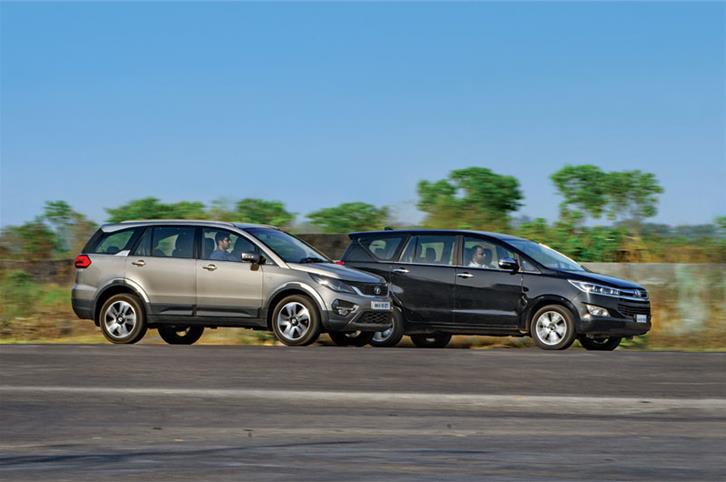



Hexa cabin is really plush for a Tata but panel fit could be better in some places.
All the works
Both vehicles come with a fair share of equipment but it’s the pricier Innova that also has a few extra goodies on board. The Innova’s centre of attraction is the large 7.0-inch touchscreen for the infotainment system that is responsive and easy to use. Equipped with a DVD player and a navigation system, it offers a superior experience compared to the Hexa’s smaller 5.0-inch system. The touchscreen in the Tata isn’t as responsive and is also positioned fairly low down on the dashboard and hence is out of easy view. However, you do get some useful mobile apps for navigation, jukebox and remote control to make the most of the system. The Hexa’s pièce de résistance, though, is its 10-speaker JBL sound system which provides excellent sound quality. The Crysta’s system, while good, slightly pales in comparison.

Both cars also get leather seats, cruise control, auto headlamps and ambient lighting, with the Hexa offering user-adjustable eight colour options and rain sensing wipers. Some extras on the Crysta are electric adjustments for the driver seat and an engine start/stop button Safety-wise, the Toyota edges ahead with an electronic stability programme and traction control (Hexa gets it on 4x4 MT only), Isofix points for child seats and seven airbags compared to the Hexa's six.
On the road
While the manual transmission-equipped Innova runs Toyota’s smaller 2.4-litre diesel engine, the diesel auto comes with a larger 2.8-litre unit making 174hp and 360Nm. The power figure is higher than the Hexa’s 2.2-litre diesel engine that makes 156hp, but with 400Nm on call, it’s the Tata that’s torquer. Like the Innova auto, the Hexa auto too uses a six-speed torque converter automatic with powersent solely to the rear wheels. The Hexa auto misses the manual’s all-wheel-drive hardware and drive modes, but truth be told, it’s still the pick of the Hexa range. And a lot of that is down to how well the engine and transmission complement each other.
The gearbox on the Hexa is quick-shifting and also has a very American-car slush gearbox fluidity with which it swaps ratios. Gearshifts are timely and make good use of the massive torque available to deliver a smooth driving experience. Performance is more than decent too, thanks to a linear spread of torque that builds up smoothly across its rev band. What’s more, noise levels are pretty well contained and the cabin is quieter than the Crysta’s at average speeds. For times when you do want more from the engine, you can switch to the gearbox’s Sport mode where shifts are delayed to make more use of the rev range. Manual gearshifts at the gear lever are on offer too, and you’ll be quite satisfied with the responsiveness of the system.
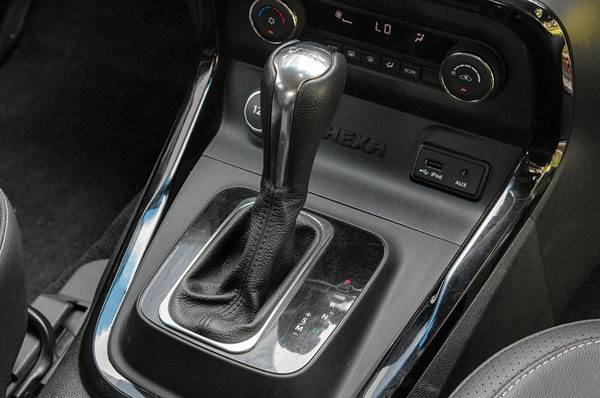
The Crysta not only gets a Sport mode for its gearbox but also gets two driving modes – Eco and Power – and there is a stark difference in engine response when either is engaged. Eco mode is suitable for relaxed cruising and economical driving, while you can actually feel the surge of torque in Power mode. What isn’t nice is the levels of engine noise. It can get pretty loud and obtrusive when revved and it’s not something you’d readily make your peace with at this price point.
The gearbox here is a quick responder and shifts gears fast and seamlessly. By default, the system upshifts early in the interest of fuel economy but switch to ‘Sport’ and it will delay shifts for a sportier feel. You can take manual control in the Innova too, but we aren’t fans of the old-school shift gate.
Coming to performance numbers, the Innova is quicker in the dash to 100kph and in kickdown acceleration too. However, the Hexa auto doesn’t necessarily feel slow at any point. Importantly, there’s little between the two models in terms of city fuel economy with the Hexa delivering 9.1kpl and the Innova delivering 9.2kpl. The Crysta does stretch each litre of diesel a bit further on the highway though. We got 13.2kpl in the Innova and 12kpl in the Hexa.
But be it in town or on the highway, the Hexa does feel its size. The steering is a touch too heavy at town speeds and there’s also lots of roll around high-speed corners. The Innova’s steering is heavy in its own right and there’s lots of lean around high-speed bends too, but on the whole, it feels more manageable and user-friendly. The Hexa does come back with a more absorbent low-speed ride and more surefooted straightline manners.
Copyright (c) Autocar India. All rights reserved.


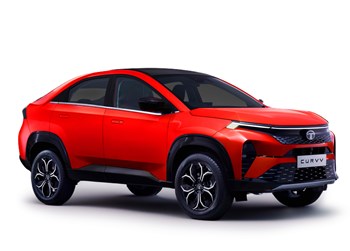
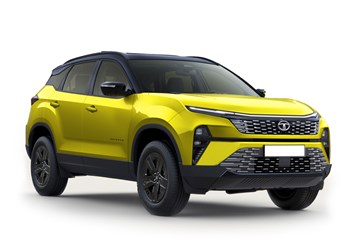
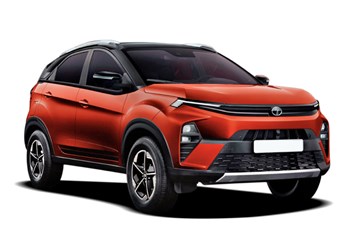

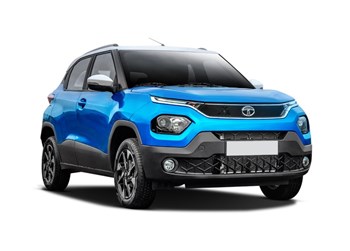

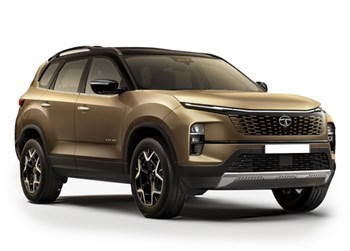

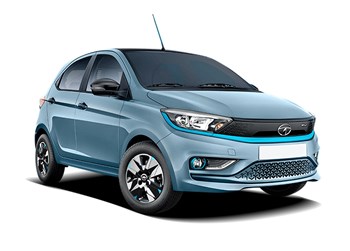

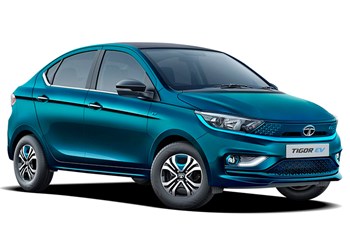


Comments
Member Login
Personal Details
No comments yet. Be the first to comment.